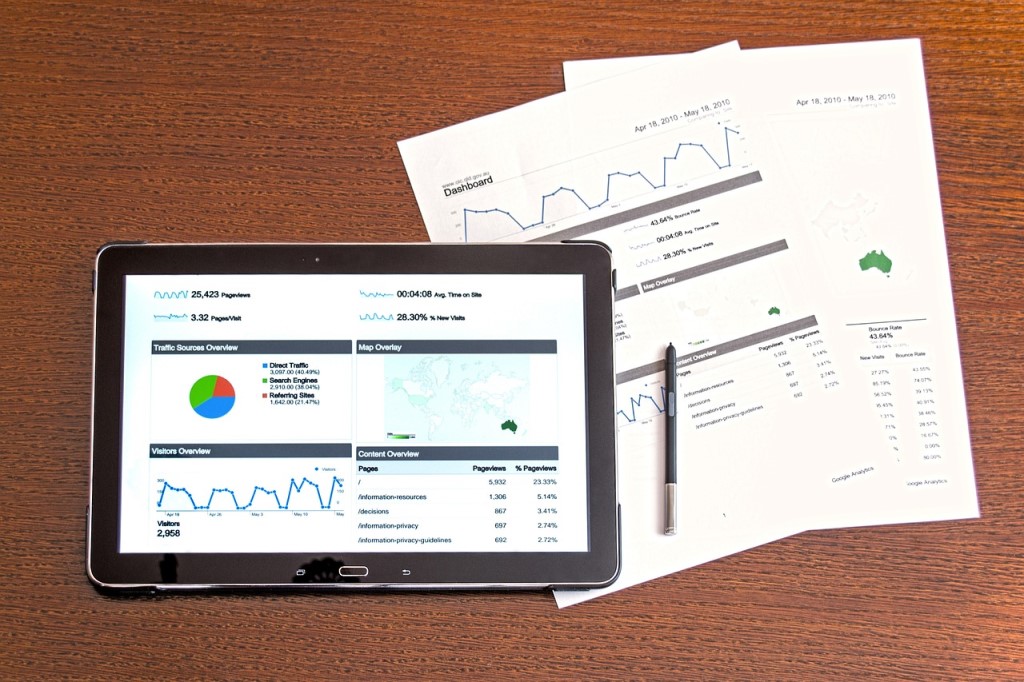Real-time data collection, processing, and analysis are crucial for investment decision-making. Especially in this digital age where the IoT and several tools are driving data analytics to enhance business processes. Investors now have access to a plethora of previously inaccessible or difficult-to-get information thanks to the development of big data analytics. Research has shown that big data analytics is a key part of making better investment decisions, which leads to better portfolio performance and higher returns.
According to a study by the World Data Science Initiative, 80% of global firms believe that big data analytics can significantly improve their decision-making processes and are rapidly investing in data analytics. Another study by MicroStrategy found that companies that use big data analytics for decision-making are 51% more likely to make profitable investments than those who do not.
In this way, it’s clear that big data analytics is changing the investment business, and those who use it well are likely to get an edge over their competitors. This article will talk about the role of big data analytics in making investment decisions, including the tools and strategies that can be used to get insights from data and make better investment decisions.
What is Big Data Analytics?
Before delving into the role of big data analytics in investment decision-making, it is important to understand what big data analytics is. Big data analytics is the process of examining large and varied data sets to uncover hidden patterns, unknown correlations, market trends, customer preferences, and other useful information that can be used to make better decisions. Big data analytics uses advanced analytical techniques, like machine learning and predictive analytics, to find insights into huge amounts of data.
Role of Big Data Analytics in Investment Decision-Making
Making decisions about investments is a complicated process that involves finding investment opportunities, evaluating risk and return, and choosing investments that fit with an investor’s goals and objectives. Big data analytics is transforming this process by providing investors with access to large amounts of data that can be used to make more informed decisions.
One area where big data analytics has had a significant impact is in the analysis of financial data. Financial data includes information on stock prices, company financials, economic indicators, and other factors that can impact investment decisions. Big data analytics allows investors to analyze this data in real time, uncovering trends and patterns that can be used to make more informed investment decisions.
For example, big data analytics can be used to analyze social media data to identify sentiment toward a particular stock or company. By analyzing social media data, investors can gain insight into the public perception of a company, which can impact the stock price. In the same way, big data analytics can be used to analyze news articles, press releases, and other sources of information to find trends and patterns that can be used to predict how stock prices will move.
In addition to financial data, big data analytics is also being used to analyze non-financial data, such as demographic data, consumer behavior data, and environmental data. This data can provide insight into consumer preferences and behavior, which can be used to identify investment opportunities in industries such as healthcare, retail, and technology.
According to research conducted by Microstrategy, 60% of companies are using big data analytics to support decision-making processes and cost-efficiency. The survey also found that firms that are using big data analytics are more likely to have outperformed their peers in terms of performance and competitive advantage.
Determining Assets Performance
External influences, such as the price of commodities, economic shifts, and the stock market, have made it more difficult to predict the performance of assets. By utilizing big data technologies such as structural modeling and predictive analysis, the technology may aid investors in determining how an asset will perform in light of upcoming market shifts. Big data analytics enables you to obtain insight into the performance of an asset over time by illustrating its performance over time under specific conditions.
Case Studies
To better understand the role of big data analytics in investment decision-making, let’s take a look at some case studies.
Case Study 1: BlackRock
BlackRock is a global investment management firm that manages over $7 trillion in assets. BlackRock has been using big data analytics to analyze financial data and identify investment opportunities. For example, BlackRock uses machine learning algorithms to analyze social media data, news articles, and other sources of information to identify trends and patterns that can be used to predict stock price movements. BlackRock has also developed an investment platform called Aladdin that uses big data analytics to analyze risk and return for various investment portfolios.
Case Study 2: Renaissance Technologies
Renaissance Technologies is a hedge fund that uses quantitative trading strategies to generate returns. Renaissance Technologies uses big data analytics to analyze financial data and identify trading opportunities. For example, Renaissance Technologies uses machine learning algorithms to analyze market data and identify patterns that can be used to predict stock price movements. The organization has consistently outperformed its peers, generating average annual returns of over 39% since its inception in 1988.
Case Study 3: JPMorgan Chase
JPMorgan Chase is a global financial services firm that has been using big data analytics to improve its investment decision-making processes. JPMorgan Chase uses big data analytics to analyze market data, economic indicators, and other factors that can impact investment decisions. JPMorgan Chase has also developed a machine learning algorithm called LOXM that is used to identify trading opportunities and manage risk in its investment portfolios.
Tools And Strategies For Investors To Make Informed decisions
Data visualization tools
These tools can help investors better understand and interpret data by presenting it in a visual format. Charts, graphs, and dashboards can make it easier to identify trends and patterns, allowing investors to make more informed decisions. Some powerful data visualization tools to get started with include Microsoft Power BI, Google Data Studio, and Tableau.
Machine learning algorithms
Machine learning algorithms can analyze large datasets and identify patterns and correlations that may be difficult to identify using traditional analysis methods. These algorithms can be trained to recognize specific patterns that are relevant to investment decision-making, such as changes in market sentiment or anomalies in financial statements.
Natural language processing (NLP)
NLP can help investors analyze large amounts of textual data, such as news articles, social media posts, and analyst reports. NLP algorithms can extract relevant information and sentiment from these sources, helping investors identify potential risks and opportunities.
Sentiment analysis
Sentiment analysis tools can analyze social media and news articles to determine public sentiment about a particular company or industry. This information can be used to predict how the market is likely to react to certain events, allowing investors to make more informed decisions.
Risk modeling
Risk modeling tools can help investors quantify and manage risk by predicting how different investment scenarios are likely to play out. By simulating different scenarios, investors can identify potential risks and adjust their investment strategies accordingly.
By using these tools and strategies, investors and businesses can extract valuable insights from data and make more informed investment decisions. This can help them to manage risk, identify new investment opportunities, and ultimately, achieve better investment returns.
Benefits of Big Data Analytics in Investment Decision-Making
The use of big data analytics in investment decision-making provides several benefits, including:
Improved decision-making
Big data analytics provides investors with access to large amounts of data that can be used to make more informed investment decisions. In fact, research shows that data analytics leads to 53 percent faster and more efficient decision-making.
Increased efficiency
Many of the tasks that go into making investment decisions can be done automatically with big data analytics. This can improve efficiency and cut costs. Research published on Finance Online shows that data-driven organizations achieved 64 percent more efficiency and productivity than their counterparts.
Enhanced risk management
Big data analytics can be used to find and control investment risks, which leads to better returns for the amount of risk taken. This is made possible by analyzing historical patterns, which can help you predict future outcomes.
Competitive advantage
Firms that are using big data analytics to support their investment decision-making processes are more likely to outperform their peers. According to a 2020 study by MicroStrategy, businesses that use big data-driven processes will likely have a 43% competitive advantage over their rivals.
Challenges of Big Data Analytics in Investment Decision-Making
While big data analytics has many benefits, it also presents several challenges, including:
Data Quantity
There are massive amounts of data generated, and many businesses are struggling to create insights from the available data. According to Forrester’s estimates, between 60 and 73 percent of all data collected by businesses is never used. In addition, according to Statista’s findings, 25% of businesses have trouble processing all of the data available to them.
Data quality
Big data analytics relies on the availability and accuracy of data. If the data used in the analysis is of poor quality, it can lead to inaccurate results.
Data privacy
Big data analytics involves the use of sensitive data, such as financial and personal information. Ensuring data privacy is a significant challenge for firms that are using big data analytics.
Technical expertise
Analyzing big data requires technical skills in areas like machine learning and predictive analytics. Companies lacking personnel with these skills may find it hard to use big data analytics well. That is part of what is giving rise to the high demands of data scientists in recent years. The demand for data scientists is on the rise, with an estimated 11.5 million new jobs for data scientists in 2026, according to a report by the US Bureau of Labor Statistics.
To sum up, big data analytics is transforming the investment decision-making process by providing investors with access to large amounts of data that can be used to make more informed investment decisions. Firms that are using big data analytics to support their investment decision-making processes are more likely to outperform their peers. Big data analytics comes with some risks, but the benefits of using this technology to make investment and business decisions are much greater than the risks. As the amount of data keeps growing at a rate that has never been seen before, it will become more and more important to use big data analytics when making investment decisions.





